Weixin Zhu
TEA-PSE 3.0: Tencent-Ethereal-Audio-Lab Personalized Speech Enhancement System For ICASSP 2023 DNS Challenge
Mar 14, 2023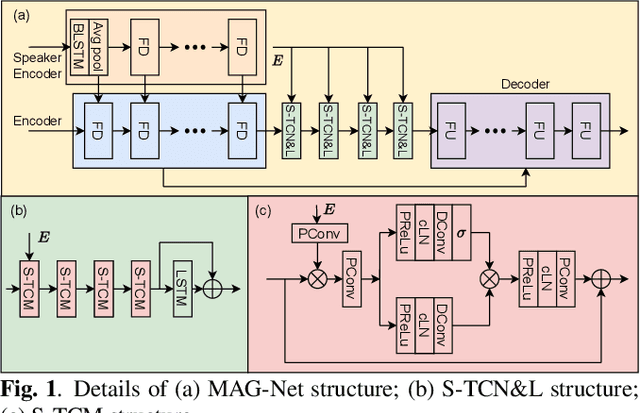


Abstract:This paper introduces the Unbeatable Team's submission to the ICASSP 2023 Deep Noise Suppression (DNS) Challenge. We expand our previous work, TEA-PSE, to its upgraded version -- TEA-PSE 3.0. Specifically, TEA-PSE 3.0 incorporates a residual LSTM after squeezed temporal convolution network (S-TCN) to enhance sequence modeling capabilities. Additionally, the local-global representation (LGR) structure is introduced to boost speaker information extraction, and multi-STFT resolution loss is used to effectively capture the time-frequency characteristics of the speech signals. Moreover, retraining methods are employed based on the freeze training strategy to fine-tune the system. According to the official results, TEA-PSE 3.0 ranks 1st in both ICASSP 2023 DNS-Challenge track 1 and track 2.
spatial-dccrn: dccrn equipped with frame-level angle feature and hybrid filtering for multi-channel speech enhancement
Oct 17, 2022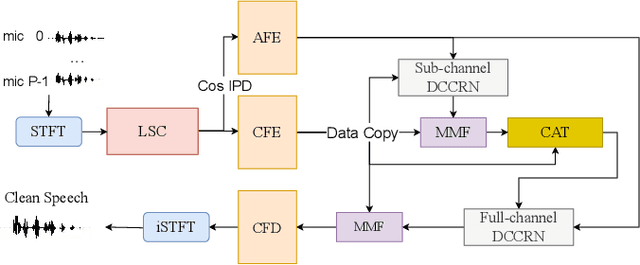
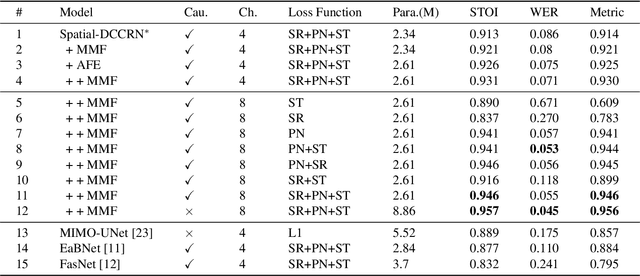
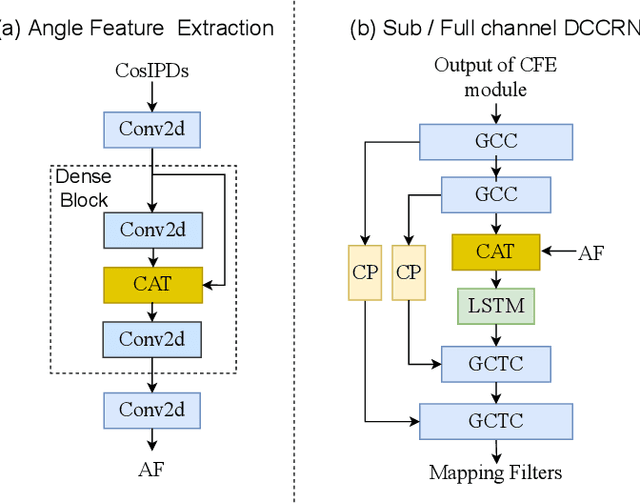
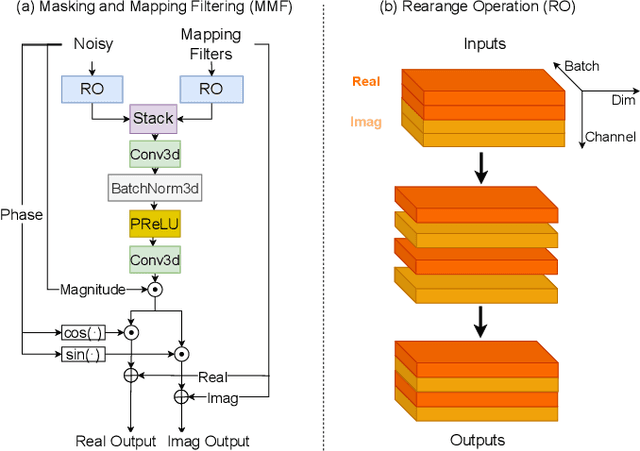
Abstract:Recently, multi-channel speech enhancement has drawn much interest due to the use of spatial information to distinguish target speech from interfering signal. To make full use of spatial information and neural network based masking estimation, we propose a multi-channel denoising neural network -- Spatial DCCRN. Firstly, we extend S-DCCRN to multi-channel scenario, aiming at performing cascaded sub-channel and full-channel processing strategy, which can model different channels separately. Moreover, instead of only adopting multi-channel spectrum or concatenating first-channel's magnitude and IPD as the model's inputs, we apply an angle feature extraction module (AFE) to extract frame-level angle feature embeddings, which can help the model to apparently perceive spatial information. Finally, since the phenomenon of residual noise will be more serious when the noise and speech exist in the same time frequency (TF) bin, we particularly design a masking and mapping filtering method to substitute the traditional filter-and-sum operation, with the purpose of cascading coarsely denoising, dereverberation and residual noise suppression. The proposed model, Spatial-DCCRN, has surpassed EaBNet, FasNet as well as several competitive models on the L3DAS22 Challenge dataset. Not only the 3D scenario, Spatial-DCCRN outperforms state-of-the-art (SOTA) model MIMO-UNet by a large margin in multiple evaluation metrics on the multi-channel ConferencingSpeech2021 Challenge dataset. Ablation studies also demonstrate the effectiveness of different contributions.
Multispectral Image Intrinsic Decomposition via Low Rank Constraint
Feb 24, 2018



Abstract:Multispectral images contain many clues of surface characteristics of the objects, thus can be widely used in many computer vision tasks, e.g., recolorization and segmentation. However, due to the complex illumination and the geometry structure of natural scenes, the spectra curves of a same surface can look very different. In this paper, a Low Rank Multispectral Image Intrinsic Decomposition model (LRIID) is presented to decompose the shading and reflectance from a single multispectral image. We extend the Retinex model, which is proposed for RGB image intrinsic decomposition, for multispectral domain. Based on this, a low rank constraint is proposed to reduce the ill-posedness of the problem and make the algorithm solvable. A dataset of 12 images is given with the ground truth of shadings and reflectance, so that the objective evaluations can be conducted. The experiments demonstrate the effectiveness of proposed method.
 Add to Chrome
Add to Chrome Add to Firefox
Add to Firefox Add to Edge
Add to Edge